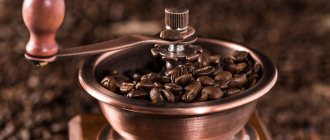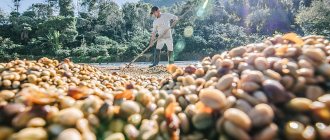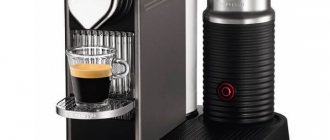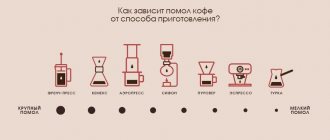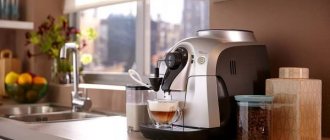And one you don't want. Author Mikhail Blavatsky tested six popular manual coffee grinders and described all the pros, cons and pitfalls. A useful article for those who choose a manual coffee grinder.
Hello, dear coffee lovers! It so happens that I have several coffee grinders known to most coffee lovers: Chinese coffee grinders MYY48, MYM51, a pair of Aergrind and Feldgrind 2 (Feld2) from the Scottish company Made by knock, Comandante C40 MK3 Nitro Blade and Kinu M47. I have used them all and can highlight their advantages and disadvantages. I share my impressions and hope that this review will help someone make a good choice.
My opinion is not based on any technical research and is purely subjective. This is personal experience of using it at home and in camping conditions. And, of course, this is not advertising.
| Model | Weight (g) | Height (cm) | Diameter(cm) | Millstone diameter (mm) |
| MYY48 | 560 | 11 | 4,5 | 38 |
| MYM51 | 600 | 17 | 4,5 | 38 |
| Aergrind | 360 | 14,5 | 4,7 | 38 |
| Feldgrind 2 | 675 | 21,6 | 5 | 38 |
| Commandante C40 MK3 | 590 | 15 | 6 | 39 |
| Kinu M47 | 1150 | 20 | 5 | 47 |
MYY48/MYM51
I'll start with Chinese coffee grinders purchased on a popular global trading platform.
Excellent coffee grinders in terms of design, convenience and ergonomics. An excellent option for an alternative, especially on hikes and trips where you need to save on the weight and volume of things. Therefore, the MYY48 was chosen as a hiking coffee grinder on a trip to Nepal and a visit to Everest Base Camp. I didn’t use it for grinding under espresso because of the slight play in the axle.
Since we were able to purchase both coffee grinders at a fairly low price with discounts, we can give them a bold 5 in terms of price/quality ratio.
Minuses
- Minor shortcomings in the quality of the millstone assembly (there is a slight play between the axle and bearings on my copy). But this minus is overshadowed by the pluses.
pros
- It is comfortable to hold in your hand due to the perforated case. Fits like a glove.
- Compact and with a nice design.
Features, design, equipment
The hopper fastening is threaded. The handle is removable. Available now with two types of millstones. G1 and GS2 Titanium with titanium coating produced in China.
Millstone
Millstones for a manual coffee grinder are made in the form of cones, one of them is fixed, the other is movable. By moving this millstone, you can change the fineness of the grind. But more on that later.
Millstones are usually made from:
- Cast iron
- Hardened steel
- Ceramics
- Stone
What influences the material of the millstones?
The taste of the coffee, the uniformity of the grind and the durability of the grinder. Let's take a look at what each material is.
The cast iron in a manual coffee grinder is very good - durable, not afraid of impacts, very wear-resistant and cheap. On the other hand, cast iron millstones gradually grind down and these shavings end up in the coffee. Therefore, the coffee begins to give off a “metallic” feel. In addition, cast iron has a porous structure and absorbs odors well. Therefore, if you often change the type of coffee, the smells of the previous varieties may get into the new one.
Hardened steel is also good for durability. Its resistance to wear is somewhat lower than that of cast iron, so such millstones wear out somewhat faster. This problem is solved by coating the millstones, for example, with titanium. But this measure greatly increases the cost of the coffee grinder. Although the option turns out to be almost ideal - durable, wear-resistant, the dense and smooth structure of titanium does not allow odors to be absorbed and is easy to clean.
Ceramic, on the contrary, is quite fragile - drop such a coffee grinder and you can go for a new one. But ceramics are not inferior in hardness to diamonds, so such millstones remain sharp for a long time and grind, perhaps, better than steel and cast iron. In addition, ceramics are not afraid of moisture and dampness, which can cause cast iron and steel to rust. The price is somewhere between cast iron and steel with titanium coating.
Stone millstones are an ideal option, but very expensive. Usually made from an alloy of ceramics and corundum. Why are they so good? Firstly, it is an environmentally friendly material. Secondly, stone millstones are the only ones that can grind coffee “to dust” for cooking in a Turk. Other materials cannot do this. Thirdly, the complete absence of foreign taste. The impact resistance and abrasion resistance of such millstones is excellent. If you don’t throw it away, you can give it to your grandchildren
